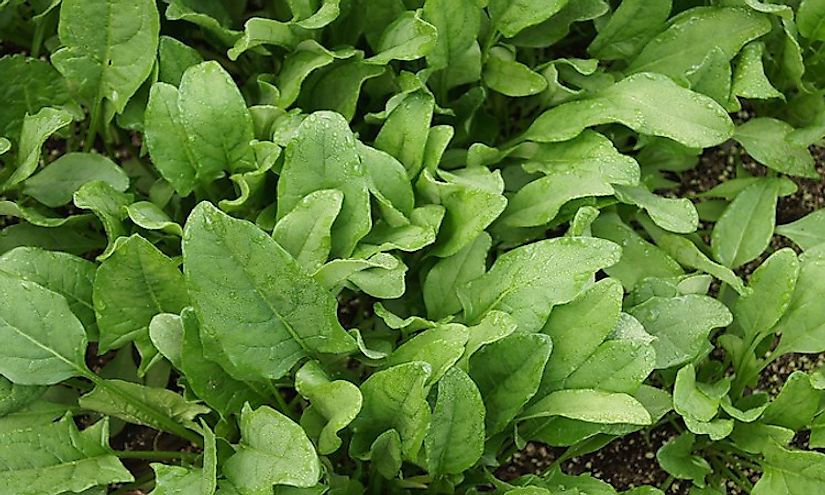World Leaders In Spinach Production

What Is Spinach?
Spinach belongs to the Amaranthaceae family, which is native to central and western Asia. It grows annually and is considered an edible flowering plant. Spinach reaches approximately 12 inches in height and has leaves that reach anywhere from 1 to 12 inches in length. These leaves can range from an oval-like shape to triangular and grow along the stalk in an alternating pattern. Very small yellowish-green flowers grow near the top of the stalk, where they mature into a hard seed cluster.
Uses For Spinach
Spinach is primarily used as a vegetable food source and is a relatively nutritious dietary supplement. In just 3.5 ounce, spinach provides 20% or more of the following vitamins and minerals: vitamin A, vitamin C, vitamin K, iron, folate, magnesium, and manganese. Spinach is actually higher in iron than beef, with 3.57 milligrams per 3.5 ounces to the 2.49 mg in beef. During World War I, medical staff gave wine mixed with spinach juice to French soldiers to help them overcome hemorrhaging. Additionally, spinach has a significant amount of calcium. However, it also contains high levels of oxalates, which reduce the body’s absorption of both iron and calcium. Spinach can be prepared in a variety of manners, including: fresh, steamed, boiled, or sauteed.
Spinach Cultivation
Spinach is a relatively fast-growing plant that can be cultivated in cooler temperatures. It does require a significant amount of pesticides to avoid crop damage, however, and as such is listed by the Environmental Working Group as one of the “Dirty Dozen”. The “Dirty Dozen” is a list of the fruits and vegetables with the highest levels of pesticide contamination.
Harvested spinach may be packaged in one of several ways. The most common packaging methods include: canned, frozen, and fresh. In some countries, spinach is packaged in bags filled with nitrogen gas in order to conserve its freshness. Low levels of radiation are sometimes used on the leaves to kill any harmful bacteria, although some researchers believe this may actually decrease the level of nutrients available in the spinach.
World Leaders In Spinach Production
China
By far, the world’s leader in spinach production is China. In 2014, this country produced 22.1 million tonnes of spinach, which represents approximately 85% of the global supply. The majority of this harvest is exported to the US, where Chinese spinach accounts for 15% of total spinach imports.
United States
The United States is the second largest spinach producer in the world, although it falls far below the production levels of China. In the US, approximately .35 million tonnes of spinach are produced annually. Over the last few years, Japan and the US have switched places for the number 2 spot on several occasions. US spinach production makes up approximately 3% of the global spinach supply and the majority of this is grown in the state of California (69%). Additionally, the US is the largest spinach exporter in the world. In 2004, these exports totaled around $38.5 million. Most of its spinach exports go to Canada.
Japan
The third largest spinach producing country in the world is Japan. This country produced around .26 million tonnes in 2014 and has lost its second place position to the US. Miyazaki is its biggest spinach producing prefecture, followed by: Gunma, Tokushima, and Chiba. Production in several other prefectures decreased after the Fukushima Nuclear disaster in 2011. Additionally, this country has experienced some changing weather patterns recently that has contributed to decreased spinach production.







